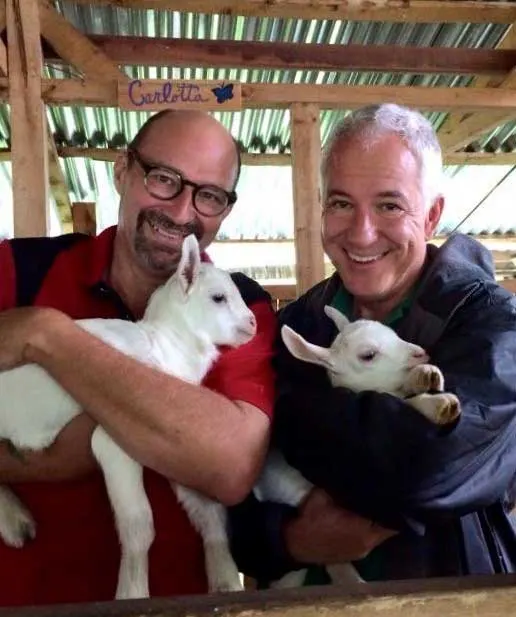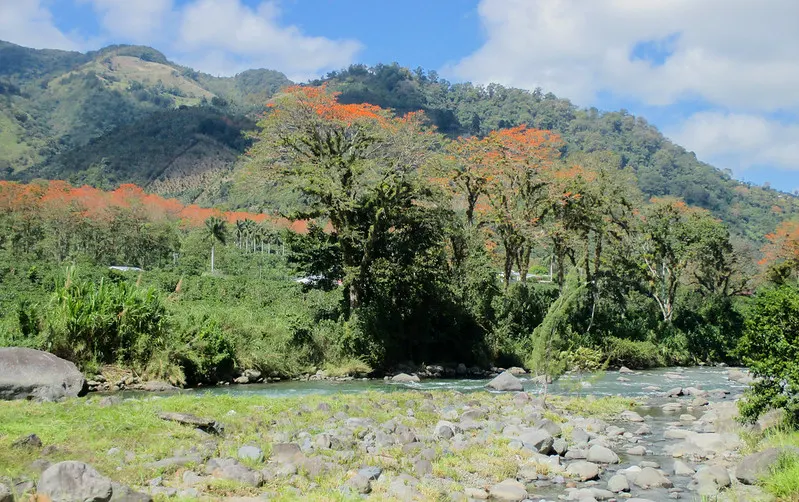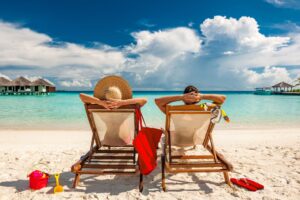Gentlemen Farmers Go Back to Basics in the Orosi Valley
9 min readIf you’ve ever been to Disney’s EPCOT, you know that despite it being a mere 300 acres, by the end of the day you feel as though you traveled around the world—you’re in “France,” and then suddenly, around the corner, you’re in “Mexico” or “China.”
That’s what it’s like to live in Costa Rica. I mean, where else can you be in the ocean and, an hour later, be a world apart in a rainforest… and an hour after that, on top of a volcano?
We’re looking for someone to spend a month in the world’s top retirement
haven for 2024—on us! Enter your email address and complete a short survey (you will receive a link by email). The deadline for submission is July 15.
By submitting your email address, you will receive a free subscription to IL Postcards and special offers from International Living and our affiliates. You can unsubscribe at any time, and we encourage you to read more about our Privacy Policy.
Costa Rica is a tiny country, encompassing an area about the size of West Virginia. But once you’re actually on the ground, it might as well be bigger than Texas. Packed into this wee piece of geography you’ll find an abundance of climates, nature zones, and wildlife. That’s one of the primary reasons that my husband, Michael, and I were drawn to this remarkable country.
Fourteen years ago, when we began our search for where to relocate from Dallas, Costa Rica kept rising to the top of every list we made. I was ready to retire, but couldn’t comfortably do so in the US without working many more years. Plus, we both felt the political system was broken, and the kids were grown—we were ready for some adventure. Costa Rica answered all those issues for us—and a perfect climate, too.
In today’s world, where time seems to be our most valuable commodity, it’s notable that the country is only a three-hour flight from Dallas. Plus, we have two international airports—San Jose and Liberia—that provide direct flights to destinations around the globe. Perfect for us since we love to travel.
There’s a reason it was just named the No. 1 Retirement Destination again this year. Costa Rica has been an expat hot-spot for four decades and is still going strong.

John Michael Arthur (left) and Michael (right).
One thing that might hint at our feelings is that we consider ourselves to be immigrants, not just expats. We’re never moving back. We’re here for good.
I love my daily life. It’s not what everyone would choose, but it’s what I want my life to be. It’s what I enjoy. I can do anything and everything I want. You might think lounging at the beach all day is paradise. But for me, it’s in the countryside, in the cool of the mountains, but with quick access to metropolitan life. (We are only about 30 minutes from all the amenities of the big city.)
When we found our property, it not only met those desires, it was adjacent to primary forests, with views of not one but two massive volcanos, and it has a crystal-clear stream that runs the full length of the acreage. We knew we had found our “Goldilocks” spot.
Buying property here, even as a foreigner, is a simple task. After the land was ours, I quickly set about renovating the 4,000-square-foot house to fit our needs and style. You can easily find contractors to do the work—and the cost of labor is ridiculously low by US standards—but I love that sort of thing, so I did most of the work myself.
These days we consider ourselves to be what Thomas Jefferson called “gentlemen farmers.” We live and work on our hobby farm growing fruits and vegetables, raising farm animals—spending time on back-to-basics living.
My days start with caring for all the animals. I roll out of bed and (sort of) wake up while milking the goats. Then it’s feeding the chickens, ducks, geese, turkeys, guineas, and rabbits, plus our “regular pets”—three Belgian Malinois. A morning chat with our gardener, maybe a morning coffee inside our 1,600-square-foot walk-in aviary. (I built the aviary to look like a dilapidated, abandoned Indo-Asian temple. We use it to house rescue birds. For example, Elton, our peacock, has a bum leg, so he can’t really walk.)
Then it’s off to other tasks. Twice a week, I make artisan cheeses from all that goat milk. While this takes up much of the day, in my free time during the process I play the piano, read, or sit by the river and just enjoy nature.
Other days, I busy myself with one of the many projects I have on my want-to-do list, like laying out new gardens, or channeling the river to make waterfalls or fountains. I also make time for a dip in the pool. Sometimes I volunteer at local charity events, or judge English spelling bees at the nearby schools—you name it.
Several times a week we’re visiting friends—expats, ticos, or most often a mix of both— at their own pieces of paradise, or they’re here with us, laughing, eating, and drinking cups of amazing shade-grown Costa Rican java, or sipping brandies and liqueurs I distill from all the tropical fruit we grow. (I never drank or even liked coffee before I found the liquid treasure that is Costa Rican coffee. Now I’m addicted.)
On $2,500 a month, we have a gardener, a handyman, and a maid.
Despite all of this, we live on much less than we did in Dallas. With my Social Security check of $2,500, we’re able to live comfortably, including paying for a full-time gardener, a full-time handyman, and a maid five days a week.
We have two Airbnb units on the property, not because we need the income, but because it’s such fun meeting so many cool people from around the world. (Nevertheless, the “fun money” we earn makes traveling even easier.)
These visitors arrive as guests and leave as friends. Now we have amigos from South Africa, to Switzerland, and beyond. It’s easy to manage as the maid prepares the space between guest stays; we just have to welcome them when they arrive in their wide-eyed wonder at what they lies out before them.
We usually don’t go more than a few weeks without a trip. We explore some new place in Costa Rica, or we make a getaway to our beach condo on the Central Pacific—or we take a “real” vacation.
I laugh when I use that term, because our entire life is really a vacation now. But because we save so much on our cost of living, we usually take three or four international trips a year. We just got back from Barcelona and soon, we’re headed on a trip around Patagonia. In July, we’re visiting friends in Germany, then some of the grandkids are coming for a two-week stay with Pops and Grandpa Michael. That’s always fun, but after that we’ll be ready for the Caribbean cruise we’ve got planned in early fall.
Learn more about Costa Rica and other countries in our daily postcard e-letter. Simply enter your email address below and we’ll send you a FREE REPORT – Explore the Old World in Laidback Costa Rica.
By submitting your email address, you will receive a free subscription to IL Postcards and special offers from International Living and our affiliates. You can unsubscribe at any time, and we encourage you to read more about our Privacy Policy.

A breathtaking view of the Orosi Valley, showcasing its vibrant greenery and stunning natural beauty.|©Jason Holland
Yes, Costa Rica has some warts, too. So does your Uncle Marvin, but that doesn’t make him any less special and lovable, does it?
There’s governmental bureaucracy; it’s not worse than in the States, just different. And there’s pura vida. I’m sure you know that’s the mantra of Costa Rica, and it is wonderful to be so laid back and relaxed. But you have to be prepared for the other side of that pura vida lifestyle. For example, a repairman may tell you he will come on Tuesday—he just doesn’t say which Tuesday.
And while living here is like a return to life of the ‘50s, that also means some of the things that weren’t so great about those times exist as well—like power outages during electrical storms.
But, in the grand scheme of things, Costa Rica’s beauty alone makes up for the minor drawbacks. Crossing from one coast to another is a jaunt of only 170 miles. But on the journey, you’ll leave the forever-vista of the warm Pacific coast—and the monkeys, sloths, and macaws that come with—and cross through verdant rainforests.
In Costa Rica, you can cross the continental divide and, at its summit, have climbed from sea level to over 11,000 feet. And you’ll reach heights where you can see both oceans—Pacific and Atlantic—once you clear the cloud forests with their prehistoric-looking plant life.
Round a bend, and you’ll come face to face with volcanoes rising massively before you. Farmlands appear on slopes, looking like those paintings Grandma Moses used to make.
You’ll see the fields that provide the world with Costa Rican coffee, then come the lower elevations replete with sugar cane, bananas, and pineapples. Finally, you’ll feel the Caribbean calling with its bohemian vibe and turquoise crystal waters.
But no matter where you journey in this small country, one thing remains constant: the smile and welcoming nature of the Costa Rican people.
Costa Rica’s Appeal Goes Far Beyond Its Landscape
There’s so much more to living here than basic facts can tell, but they’re a good place to start.
Costa Rica is a nation of 5.5 million. Residents call themselves ticos. The population is 70% Catholic, 14% Protestant—and 100% soccer.
Costa Rica has been a stable democratic republic for over 75 years. And that democracy guarantees both citizens and foreigners—that means you—equality before the law, plus the freedom to own property, freedom to petition and assemble, and freedom of speech. Costa Rica also abolished its army in 1948. Guess where the extra money went? Into education. That’s why Costa Rica has a 96% literacy rate.
Coffee was Costa Rica’s No. 1 source of income until tourism replaced it in 1991. It’s now the second largest exporter of bananas in the world—so you probably already see a bit of Costa Rica at your local grocery store.
Our wee footprint takes up only 0.03% of the world’s land mass, yet we shelter almost 5% of the species of the world. Almost 25% of the country is protected.
Costa Rica plans to be the first carbon-neutral country in the world by 2025, and it’s already well on its way. For the past several years, the country has used almost no fossil fuels to generate electricity. Last year, Costa Rica was fueled by 99.6% renewable energy.
Speaking of electricity, we use 120v, 60 Hz—just like the US. So all of your appliances and electronics are just plug and play. Not many retirement destinations can say that.
Costa Rica has a socialized medical system (called the CAJA) available to every citizen and legal resident—regardless of age or pre-existing conditions. You read that right; no pre-existing conditions are excluded from medical coverage. While there is a monthly cost for the CAJA, it is a fraction of North American insurance costs—we pay $78 a month.
On top of that, Costa Rica has a top-notch, state-of-the-art private medical system that rivals (and often surpasses) medical care in the States. Most expats use a combination of the public and private medical systems. In general, private dental care costs run about 20% of US costs, and private medical care runs about 25%–30% of US costs.
Learn more about Costa Rica and other countries in our daily postcard e-letter. Simply enter your email address below and we’ll send you a FREE REPORT – Explore the Old World in Laidback Costa Rica.
By submitting your email address, you will receive a free subscription to IL Postcards and special offers from International Living and our affiliates. You can unsubscribe at any time, and we encourage you to read more about our Privacy Policy.



